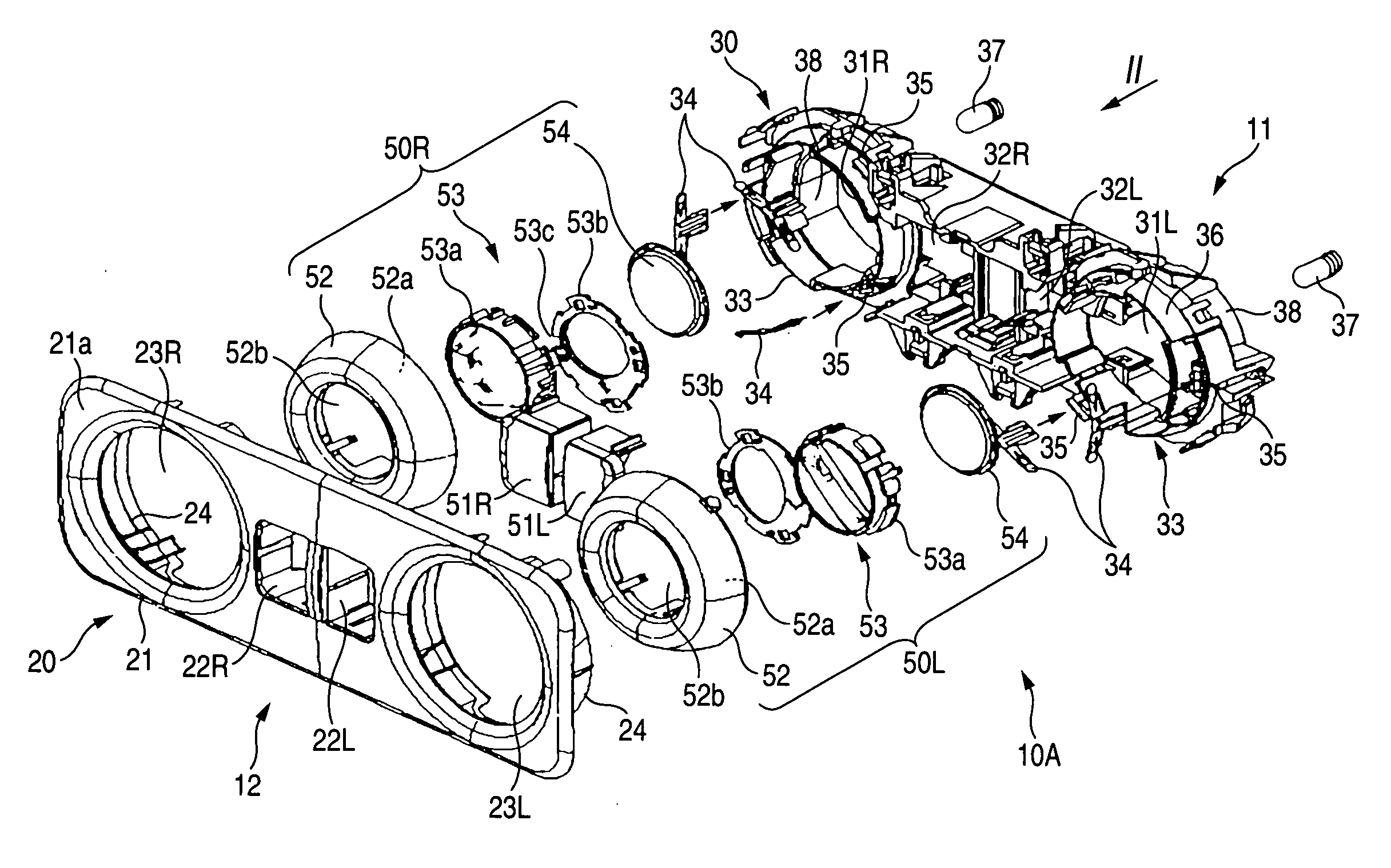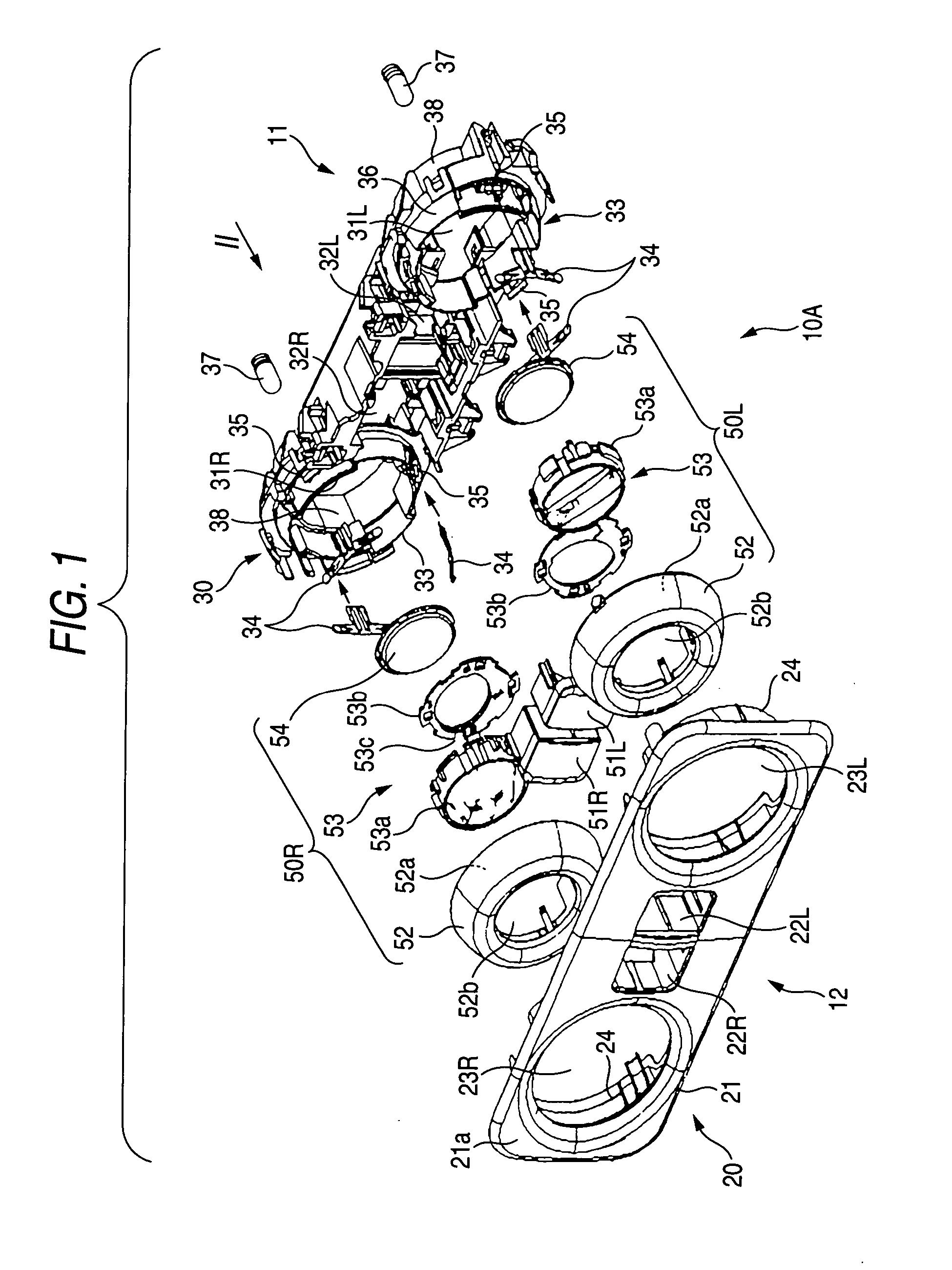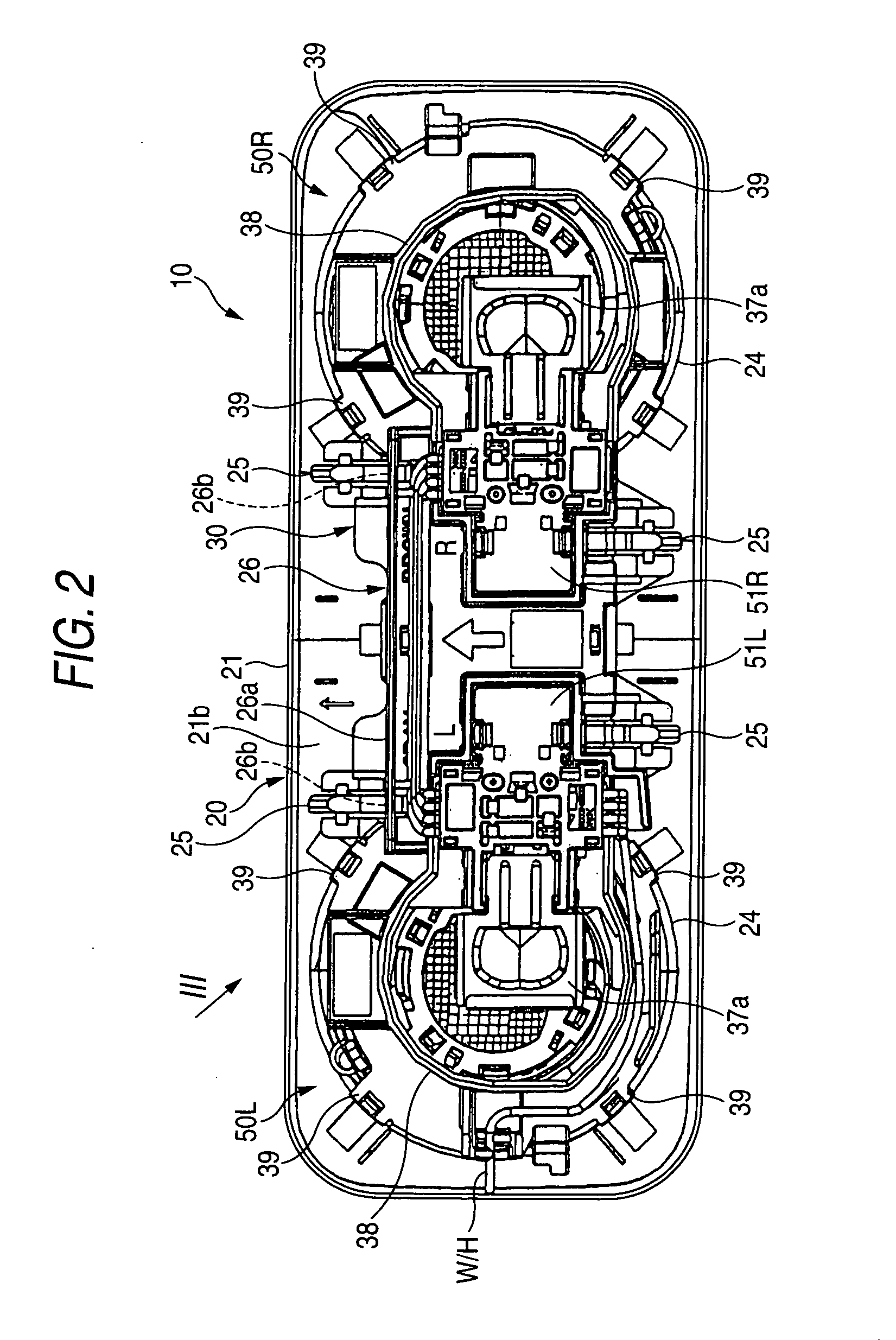Interior illumination lamp
- Summary
- Abstract
- Description
- Claims
- Application Information
AI Technical Summary
Benefits of technology
Problems solved by technology
Method used
Image
Examples
Embodiment Construction
[0033] Referring now to the drawings, an embodiment of the present invention will be described.
[0034] As shown in FIG. 1, an interior illumination lamp 10 according to the embodiment of the present invention includes a decorative member 20 exposed to a cabin 12 (see FIG. 7), and a functioning body 30 located inside the decorative member 20 as a main body provided with various electrical components mounted thereon.
[0035] As shown in FIG. 7, the interior illumination lamp 10 is configured such that the decorative member 20 is attached to an interior material (trim) 13 provided inside a vehicle body 11, so as to be capable of being connected easily to a wire harness W / H distributed on the back side of the interior material 13 in advance.
[0036] As sown in FIG. 1 to FIG. 3, the decorative member 20 has a surface 21a exposed to the cabin 12 and includes a frame 21 formed, for example, into a square shape. At the center of the frame 21, there are provided switch holes 22L, 22R for expos...
PUM
 Login to View More
Login to View More Abstract
Description
Claims
Application Information
 Login to View More
Login to View More - R&D
- Intellectual Property
- Life Sciences
- Materials
- Tech Scout
- Unparalleled Data Quality
- Higher Quality Content
- 60% Fewer Hallucinations
Browse by: Latest US Patents, China's latest patents, Technical Efficacy Thesaurus, Application Domain, Technology Topic, Popular Technical Reports.
© 2025 PatSnap. All rights reserved.Legal|Privacy policy|Modern Slavery Act Transparency Statement|Sitemap|About US| Contact US: help@patsnap.com



